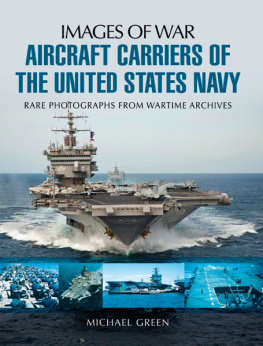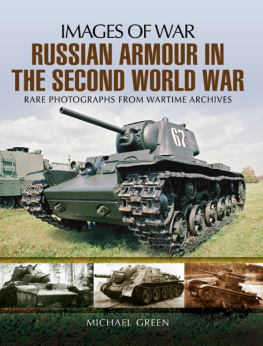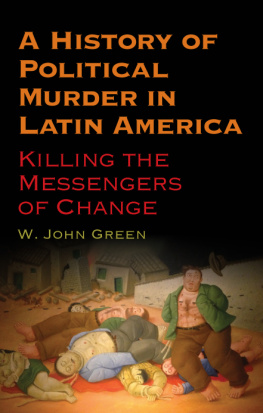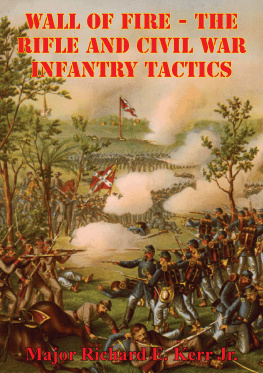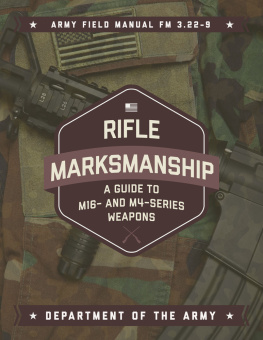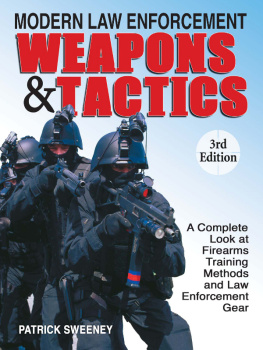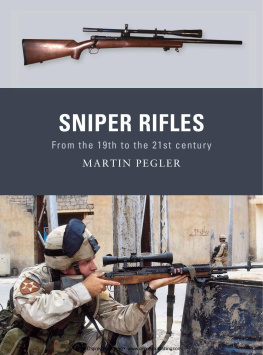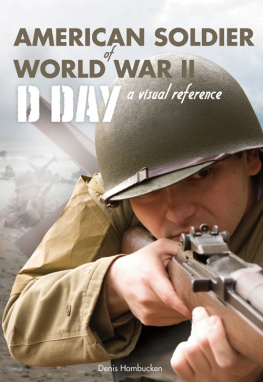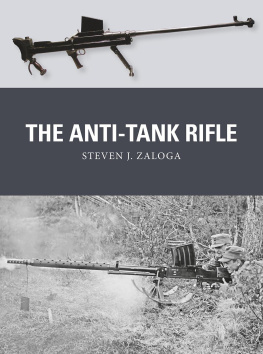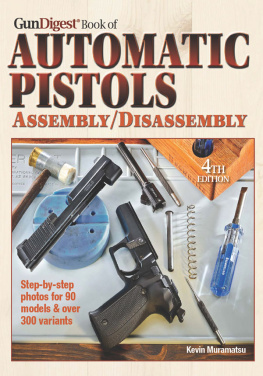Green - United States Infantry Weapons of the Second World War
Here you can read online Green - United States Infantry Weapons of the Second World War full text of the book (entire story) in english for free. Download pdf and epub, get meaning, cover and reviews about this ebook. year: 2015, publisher: Pen and Sword, genre: Romance novel. Description of the work, (preface) as well as reviews are available. Best literature library LitArk.com created for fans of good reading and offers a wide selection of genres:
Romance novel
Science fiction
Adventure
Detective
Science
History
Home and family
Prose
Art
Politics
Computer
Non-fiction
Religion
Business
Children
Humor
Choose a favorite category and find really read worthwhile books. Enjoy immersion in the world of imagination, feel the emotions of the characters or learn something new for yourself, make an fascinating discovery.
- Book:United States Infantry Weapons of the Second World War
- Author:
- Publisher:Pen and Sword
- Genre:
- Year:2015
- Rating:4 / 5
- Favourites:Add to favourites
- Your mark:
- 80
- 1
- 2
- 3
- 4
- 5
United States Infantry Weapons of the Second World War: summary, description and annotation
We offer to read an annotation, description, summary or preface (depends on what the author of the book "United States Infantry Weapons of the Second World War" wrote himself). If you haven't found the necessary information about the book — write in the comments, we will try to find it.
Green: author's other books
Who wrote United States Infantry Weapons of the Second World War? Find out the surname, the name of the author of the book and a list of all author's works by series.
United States Infantry Weapons of the Second World War — read online for free the complete book (whole text) full work
Below is the text of the book, divided by pages. System saving the place of the last page read, allows you to conveniently read the book "United States Infantry Weapons of the Second World War" online for free, without having to search again every time where you left off. Put a bookmark, and you can go to the page where you finished reading at any time.
Font size:
Interval:
Bookmark:
First published in Great Britain in 2015 by
PEN & SWORD MILITARY
An imprint of
Pen & Sword Books Ltd
47 Church Street
Barnsley
South Yorkshire
S70 2AS
Copyright Michael Green, 2015
ISBN: 978-1-47382-722-6
PDF ISBN: 978-1-47385-807-7
EPUB ISBN: 978-1-47385-806-0
PRC ISBN: 978-1-47385-805-3
The right of Michael Green to be identified as author of this work has been asserted by him in accordance with the Copyright, Designs and Patents Act 1988.
A CIP catalogue record for this book is available from the British Library.
All rights reserved. No part of this book may be reproduced or transmitted in any form or by any means, electronic or mechanical including photocopying, recording or by any information storage and retrieval system, without permission from the Publisher in writing.
Typeset by Concept, Huddersfield, West Yorkshire HD4 5JL.
Printed and bound in India by Replika Press Pvt. Ltd.
Pen & Sword Books Ltd incorporates the imprints of Pen & Sword Archaeology, Atlas, Aviation, Battleground, Discovery, Family History, History, Maritime, Military, Naval, Politics, Railways, Select, Social History, Transport, True Crime, and Claymore Press, Frontline Books, Leo Cooper, Praetorian Press, Remember When, Seaforth Publishing and Wharncliffe.
For a complete list of Pen & Sword titles please contact
PEN & SWORD BOOKS LIMITED
47 Church Street, Barnsley, South Yorkshire, S70 2AS, England
E-mail:
Website: www.pen-and-sword.co.uk
Contents
Dedication
I would like to dedicate this book to Alan Cors,
founder and Chairman of the American in Wartime Museum,
for his help and support over these many years.
Acknowledgments
A s with any published work, authors must depend on their friends for assistance. For this work, they include Michael Panchyshyn and Martin Morgan. The bulk of the historical photographs in this work were acquired from the National Archives. In addition, Gunnery Sergeant (Ret.) Thomas E. Williams (former director of the United States Marine Corps Historical Company) provided contemporary images of Marine Corps Second World War re-enactors armed with historical weapons.
For brevitys sake, pictures credited to the National Archives will be shortened to NA and those from the United States Marine Corps Historical Company are shortened to USMCHC.
Introduction
D uring the Second World War, American soldiers and Marines experienced combat in a variety of challenging environments, against a number of different foes. Despite the worldwide conflict often being defined by the actions of large numbers of aircraft and warships, there continued to be a tactical landscape in which hand-held infantry weapons mattered as much they ever had. On many occasions, it would be American infantrymen firing from hastily dug foxholes, refusing to give in to fierce enemy onslaughts that swayed the course of battles.
It was during this time in history that the rifles, pistols, carbines, and submachine guns used by soldiers and marines earned a special reputation for ruggedness and effectiveness that proved Americans were among the worlds best weapon makers. Some of the best known of these small arms were the legendary M1911 pistol, the incomparable semi-automatic M1 Garand, the unstoppable Browning Automatic Rifle (BAR), and the Thompson submachine gun, which also saw service with the British Army during the Second World War. There were also a few failures, such as the Johnson Rifle and the Reising submachine gun.
American hand-held infantry small arms were supported in combat by a number of infantry crew-served weapons, such as machine guns, antitank rocket launchers, mortars, recoilless rifles, and flamethrowers. The best known of these crew-served infantry support weapons were the .30 and .50 caliber machine guns, both water-cooled and air-cooled, designed by famous American inventor John M. Browning. The latter, in its air-cooled version, continues to serve with the American military today.
On the larger end of the spectrum of infantry support weapons employed by American soldiers and Marines during the Second World War, there were some towed weapons. These encompassed both the 37mm and 57mm antitank guns, the latter a British-derived weapon. In addition, there was the short-range 75mm Pack M1A1 and the 105mm M2A1 and M3 howitzers, which offered fire-support in an indirect role to the mortars of the infantry units of both the U.S. Army and U.S. Marine Corps. In addition, tanks were a divisional asset of U.S. Marine Corps infantry divisions of the Second World War, but not of U.S. Army infantry divisions until after the Second World War.
Notes to the Reader
D uring the Second World War, the U.S. Army mobilized ninety-one divisions, of which two were later deactivated. Of the remaining eighty-nine divisions, sixty-six were infantry, with a personnel strength of 15,514 men in the August 1942 Table of Organization and Equipment (TO&E). This figure dropped to approximately 14,037 men in a January 1945 TO&E. If all the U.S. Army non-divisional units of infantry and artillery had been gathered together during the Second World War, six additional infantry divisions could have been formed.
The bulk of the fighting strength of each U.S. Army infantry division was contained within three infantry regiments that totaled from a high in a June 1941 TO&E of 10,020 infantrymen, to a low of 9,204 infantrymen in a January 1945 TO&E. Each U.S. Army infantry regiment consisted of three infantry battalions, which were broken down into three infantry companies per infantry battalion. In turn, each infantry battalion had three rifle companies divided into three infantry platoons. Each infantry platoon was further subdivided into three infantry squads.
The U.S. Marine Corps mobilized six divisions during the Second World War, all of which could be considered infantry divisions. Marine divisions, unlike U.S. Army divisions, were all-arms units, meaning the tanks, artillery, and antiaircraft guns were all organic to the divisional TO&E at different times, including aviation, which will not be covered in this work.
Like the U.S. Army infantry divisions, the six all-arms U.S. Marine Corps divisions went through a number of changes in their TO&E from the divisional level down to the infantry squad level during the Second World War. The U.S. Marine Corps wartime infantry divisions were based on the same triangular organization structure as were U.S. Army Infantry Divisions.
Chapter One
Individual Infantry Weapons
T he most widely used handgun in American military (i.e. the U.S. Army and U.S. Marine Corps) service during the Second World War was officially referred to as the Pistol, Automatic, Caliber .45 Model 1911A1. Most referred to it as the .45, the .45 automatic, or the Colt .45. It entered into production in 1926 and was an improved version of the original (or first generation) model of the weapon designated the Pistol, Automatic, Caliber Model 1911, employed during the First World War. As so many of the M1911s remained in the inventory, only a small number of the improved second generation A1 variant were built prior to the Second World War.
With Americas entry into the Second World War, following the Japanese attack on Pearl Harbor, Hawaii, and with the American military dramatically growing in size, the Colt Patent Firearms Company was contracted to build a large number of the M1911A1 version of the weapon. Because Colt could not construct the quantity asked for by the U.S. Army Ordnance Department (hereafter referred to as merely the Ordnance Department), four civilian firms were contracted by the Ordnance Department to build the weapon. The American military saw the M1911A1 primarily as a defensive weapon and sought to restrict its issue to officers, to some crew-served weapons, and rear area service troops.
Next pageFont size:
Interval:
Bookmark:
Similar books «United States Infantry Weapons of the Second World War»
Look at similar books to United States Infantry Weapons of the Second World War. We have selected literature similar in name and meaning in the hope of providing readers with more options to find new, interesting, not yet read works.
Discussion, reviews of the book United States Infantry Weapons of the Second World War and just readers' own opinions. Leave your comments, write what you think about the work, its meaning or the main characters. Specify what exactly you liked and what you didn't like, and why you think so.


